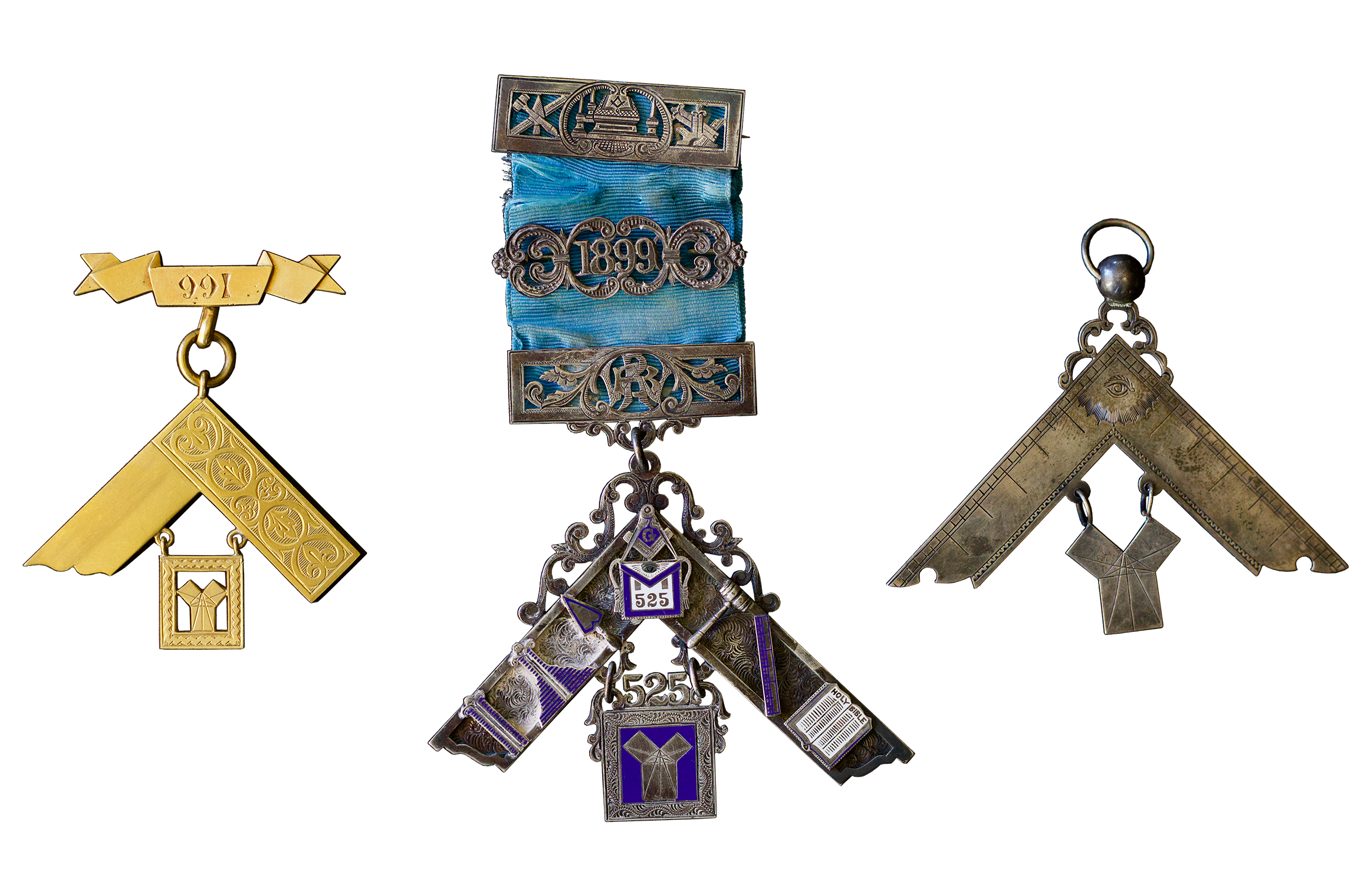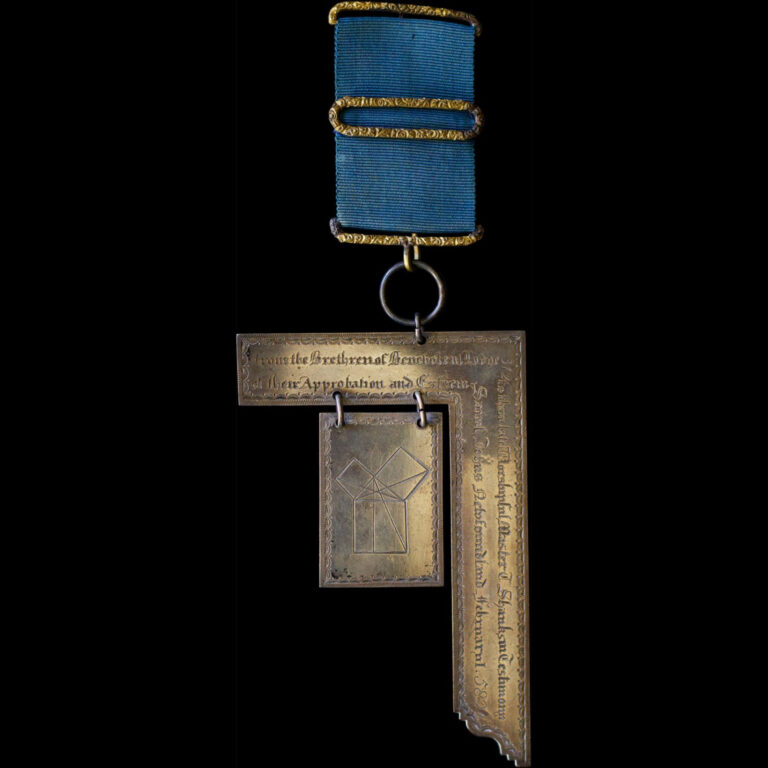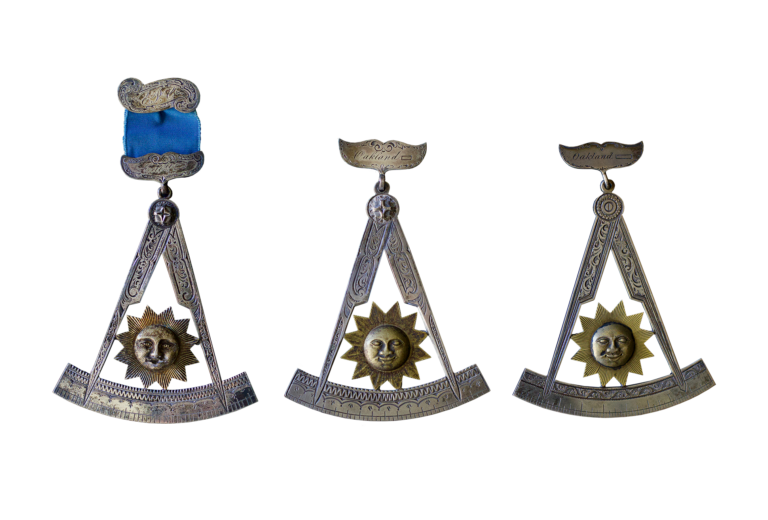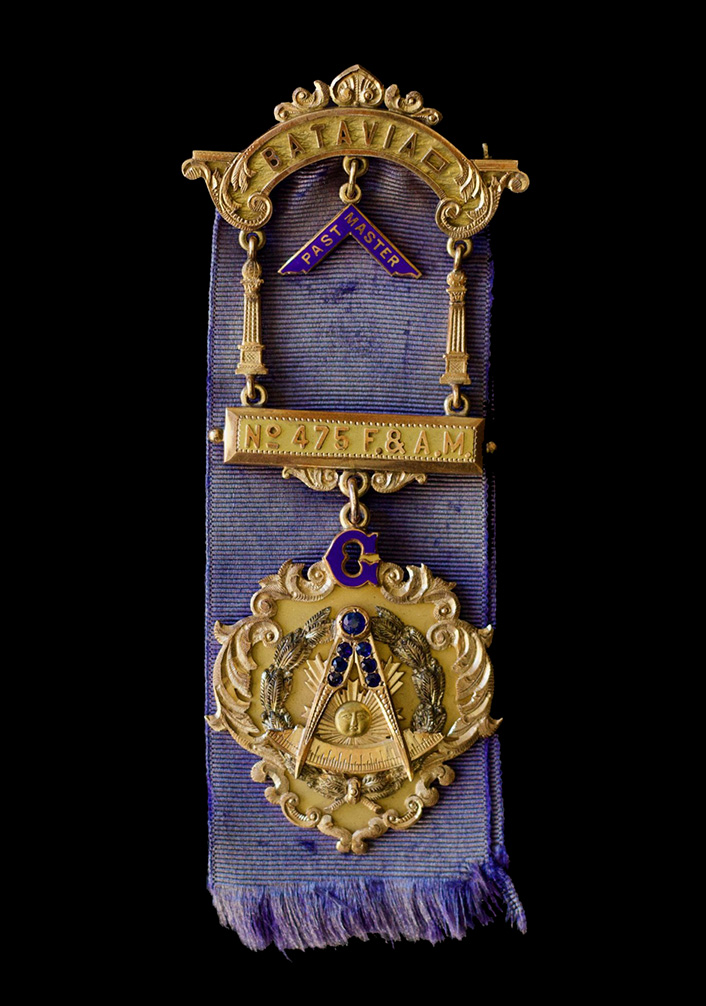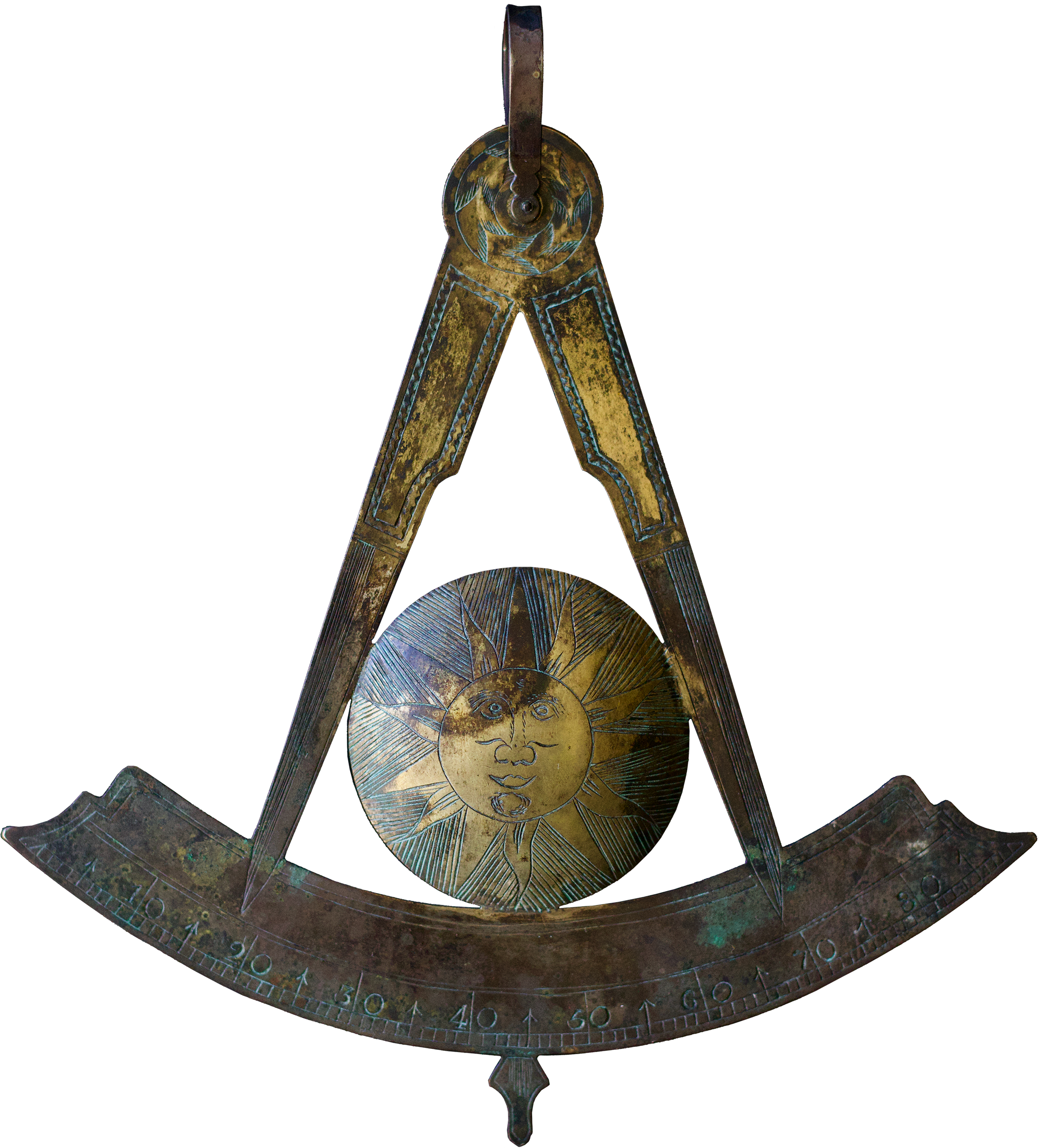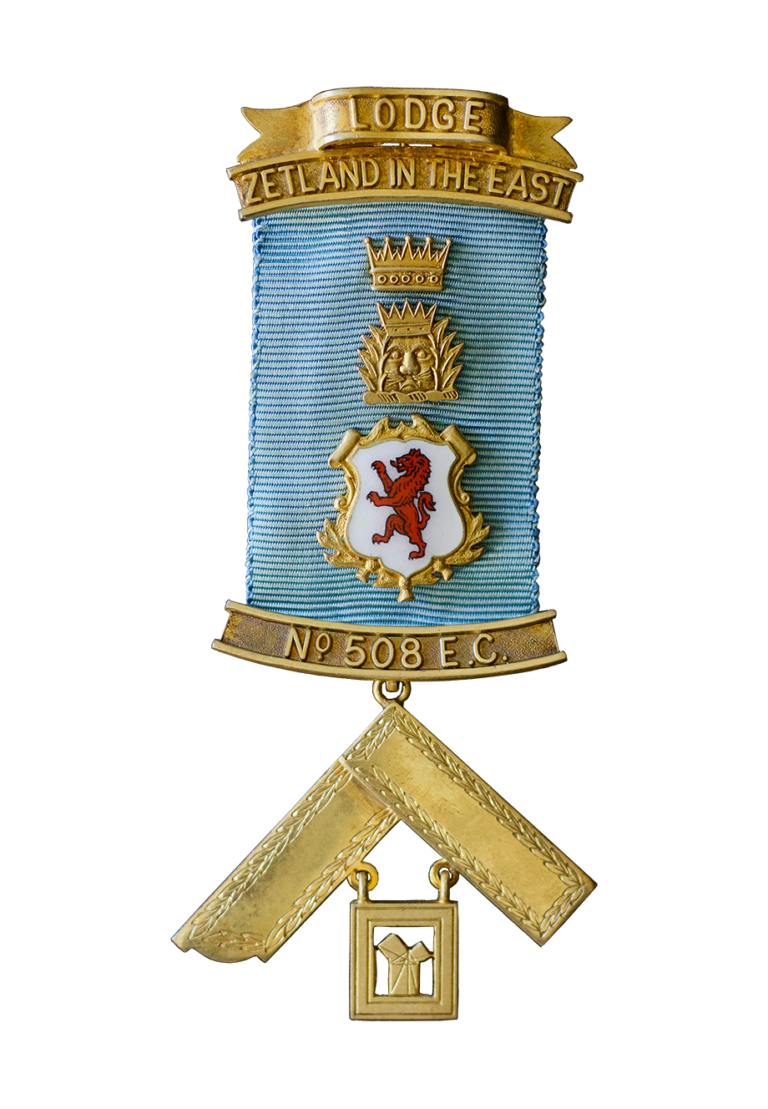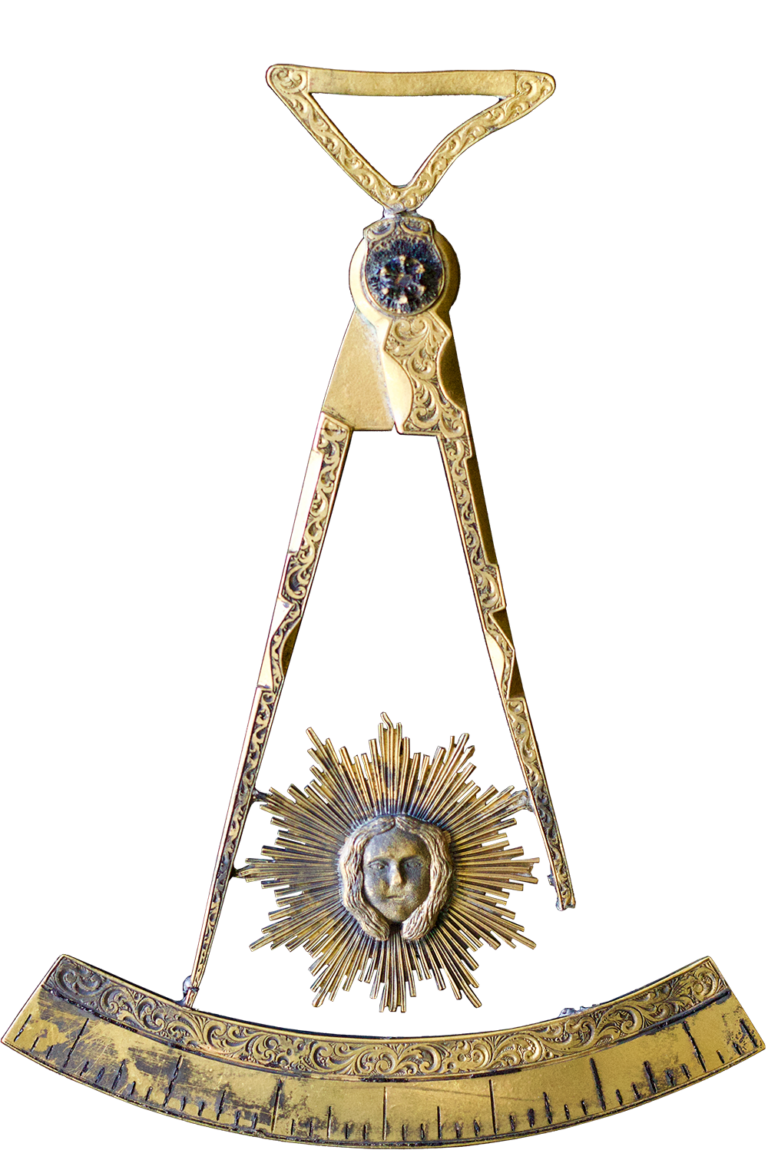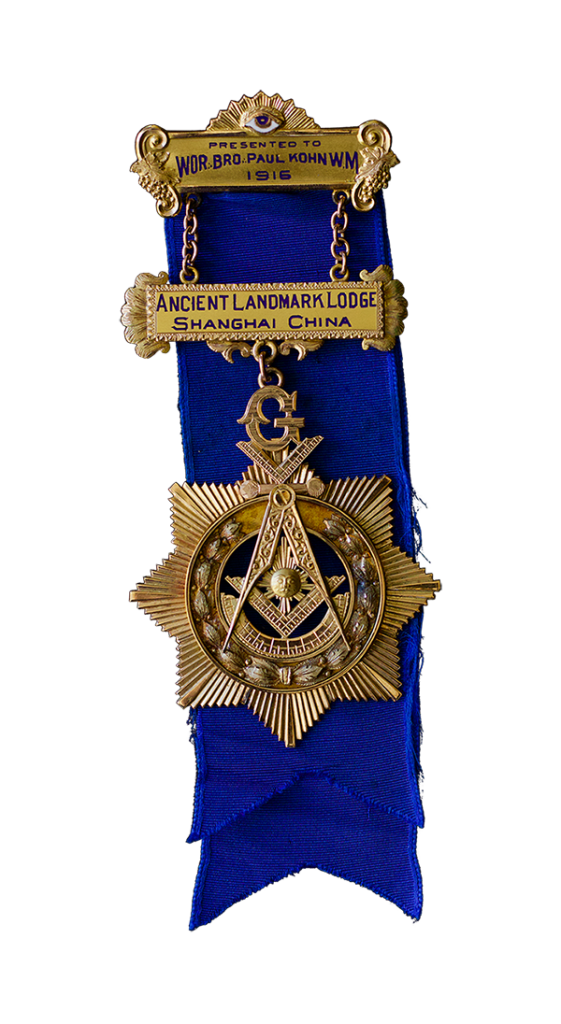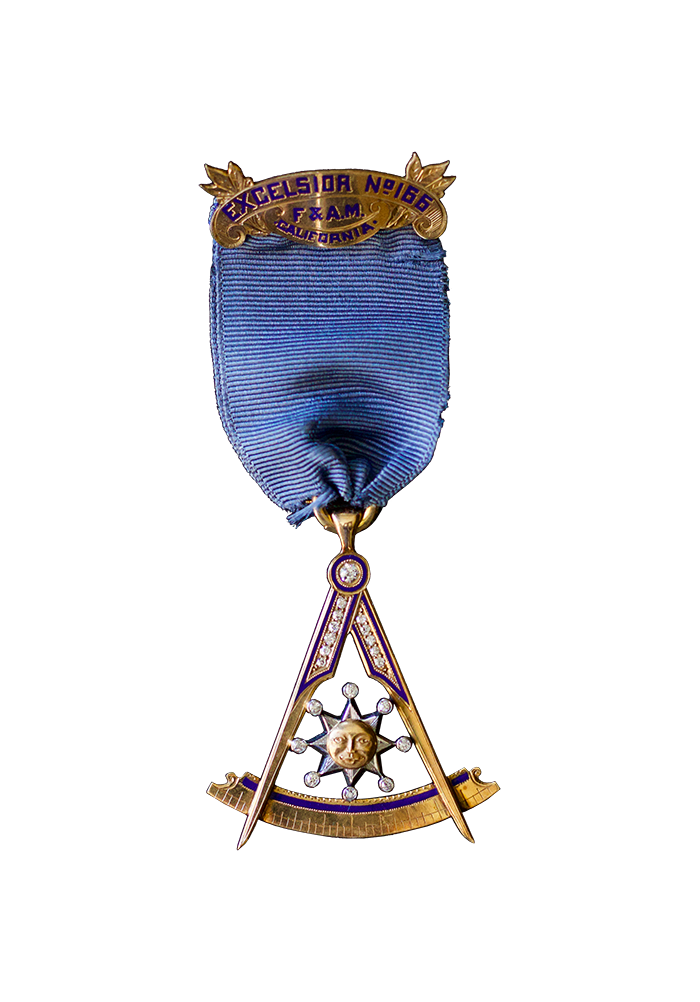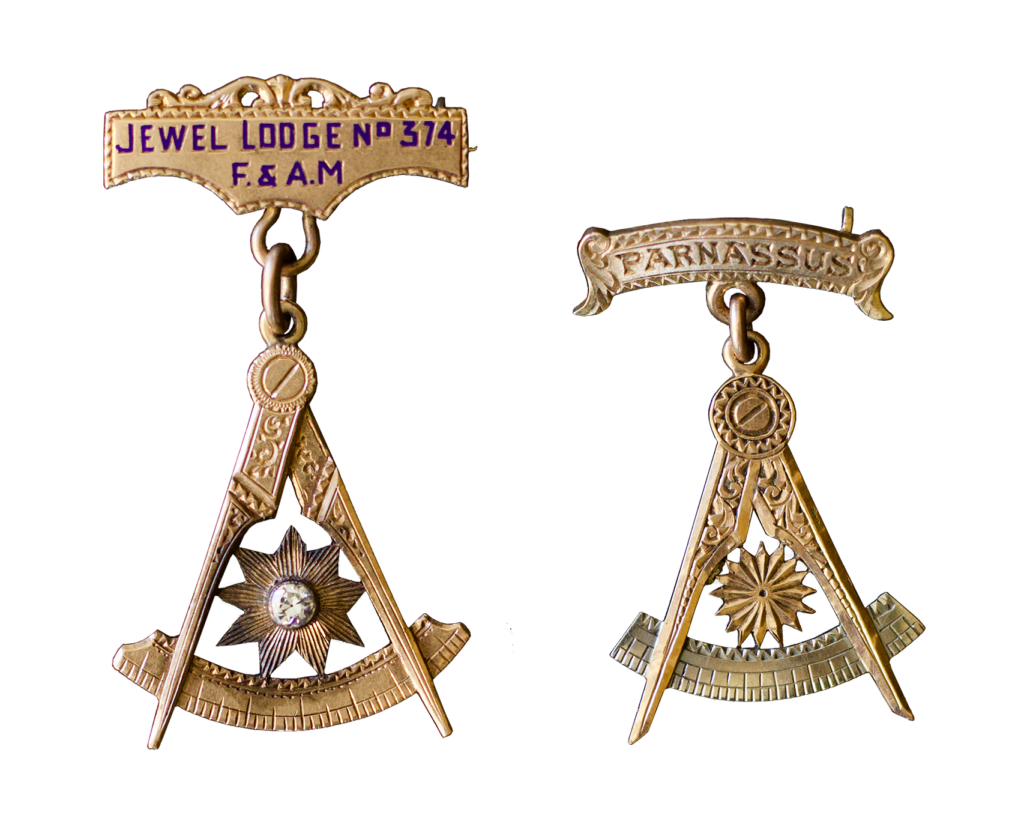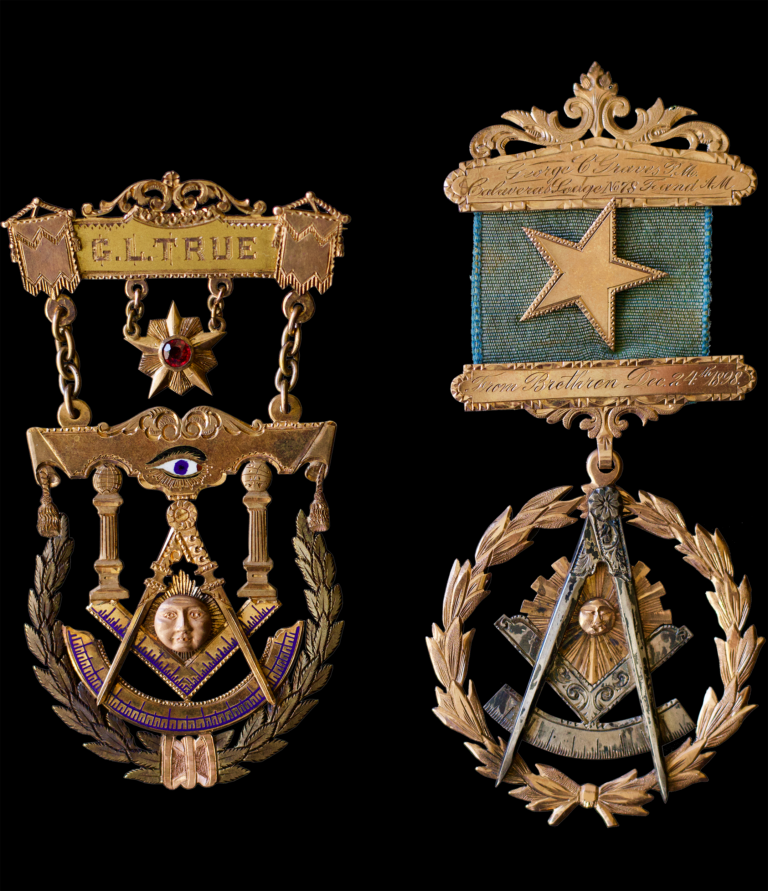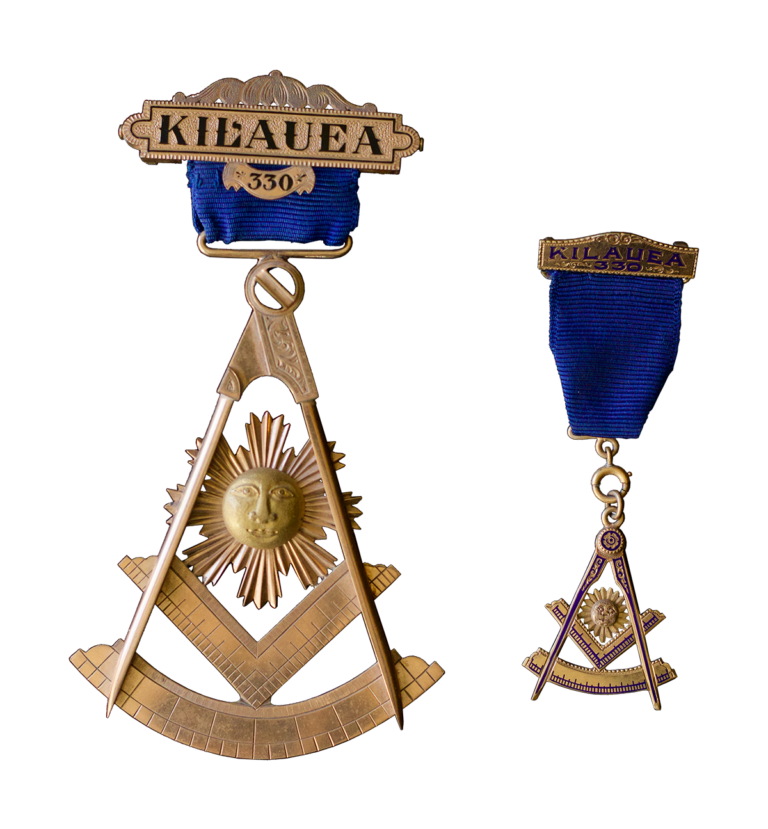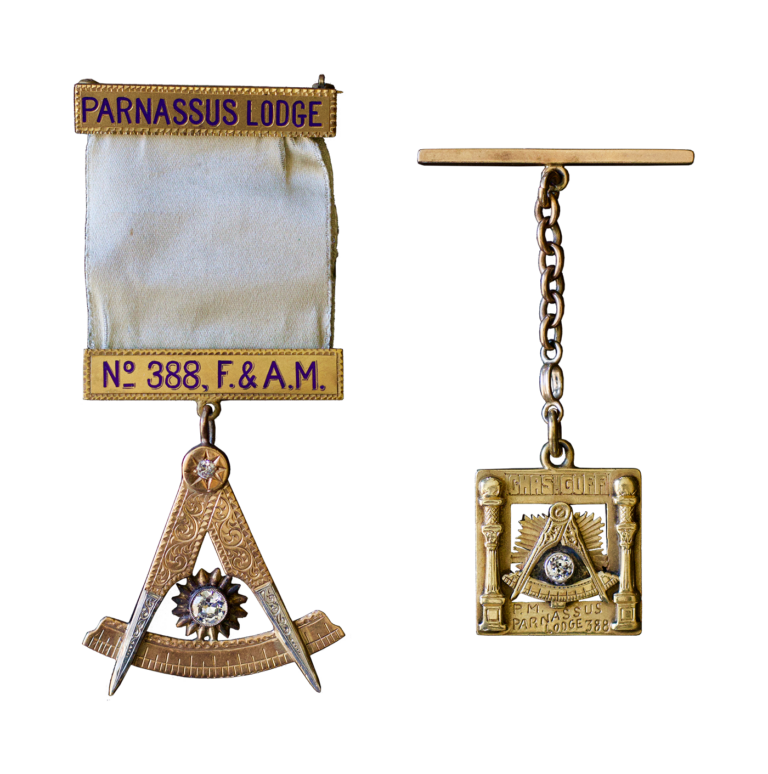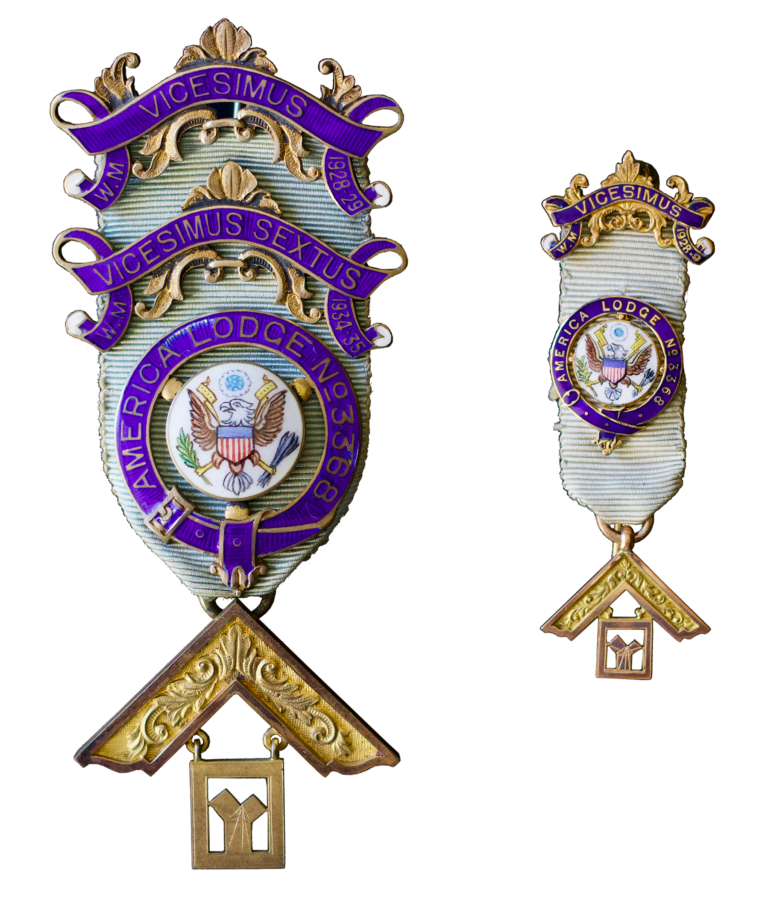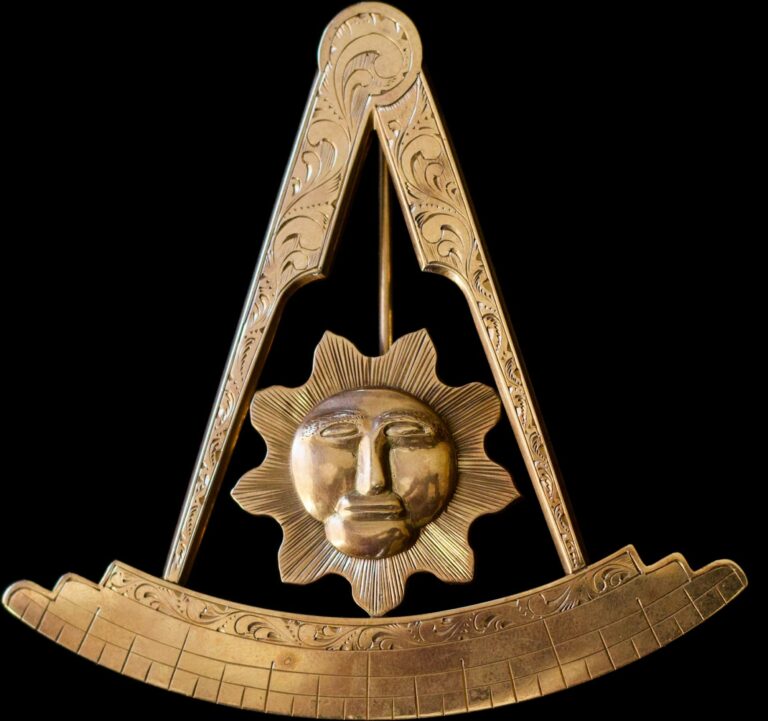
1
Past Master’s Jewel
Escurial Lodge No. 7
Virginia City, Nevada, 1869
Gold
Acc# 84.13.1
Chartered in 1864 as Escurial Lodge No. 171 under the Grand Lodge of California, the lodge became Escurial Lodge No. 7 upon the founding of the Grand Lodge of Nevada in in 1865. This solid gold past master’s jewel is a fitting representation of Masonry in Virginia City, Nevada. The city was the site of the Comstock Lode, the most valuable ore discovery in the western United States, producing more than $14,000,000 of gold and $21,000,000 of silver in the peak year of 1877.
The engraving on its reverse reads: “Presented to Past Master S.B. Fergson by the members of Escurial Lodge No. 7.”

